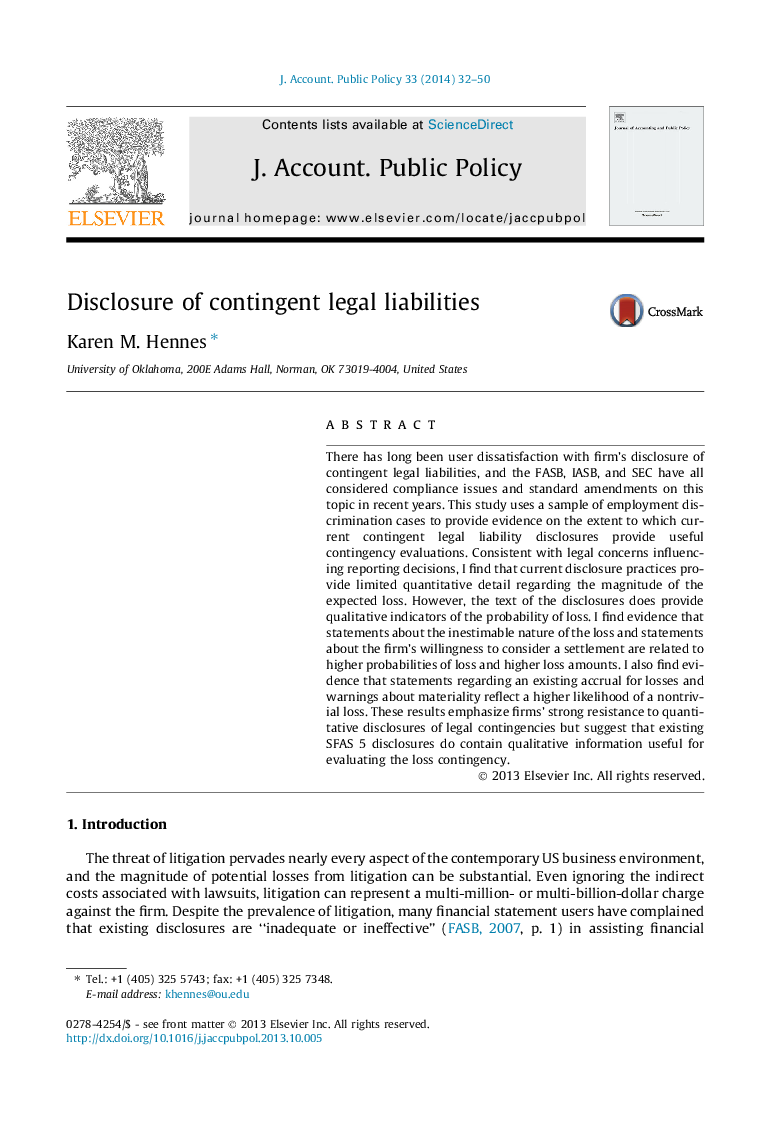| Article ID | Journal | Published Year | Pages | File Type |
|---|---|---|---|---|
| 1005839 | Journal of Accounting and Public Policy | 2014 | 19 Pages |
There has long been user dissatisfaction with firm’s disclosure of contingent legal liabilities, and the FASB, IASB, and SEC have all considered compliance issues and standard amendments on this topic in recent years. This study uses a sample of employment discrimination cases to provide evidence on the extent to which current contingent legal liability disclosures provide useful contingency evaluations. Consistent with legal concerns influencing reporting decisions, I find that current disclosure practices provide limited quantitative detail regarding the magnitude of the expected loss. However, the text of the disclosures does provide qualitative indicators of the probability of loss. I find evidence that statements about the inestimable nature of the loss and statements about the firm’s willingness to consider a settlement are related to higher probabilities of loss and higher loss amounts. I also find evidence that statements regarding an existing accrual for losses and warnings about materiality reflect a higher likelihood of a nontrivial loss. These results emphasize firms’ strong resistance to quantitative disclosures of legal contingencies but suggest that existing SFAS 5 disclosures do contain qualitative information useful for evaluating the loss contingency.
